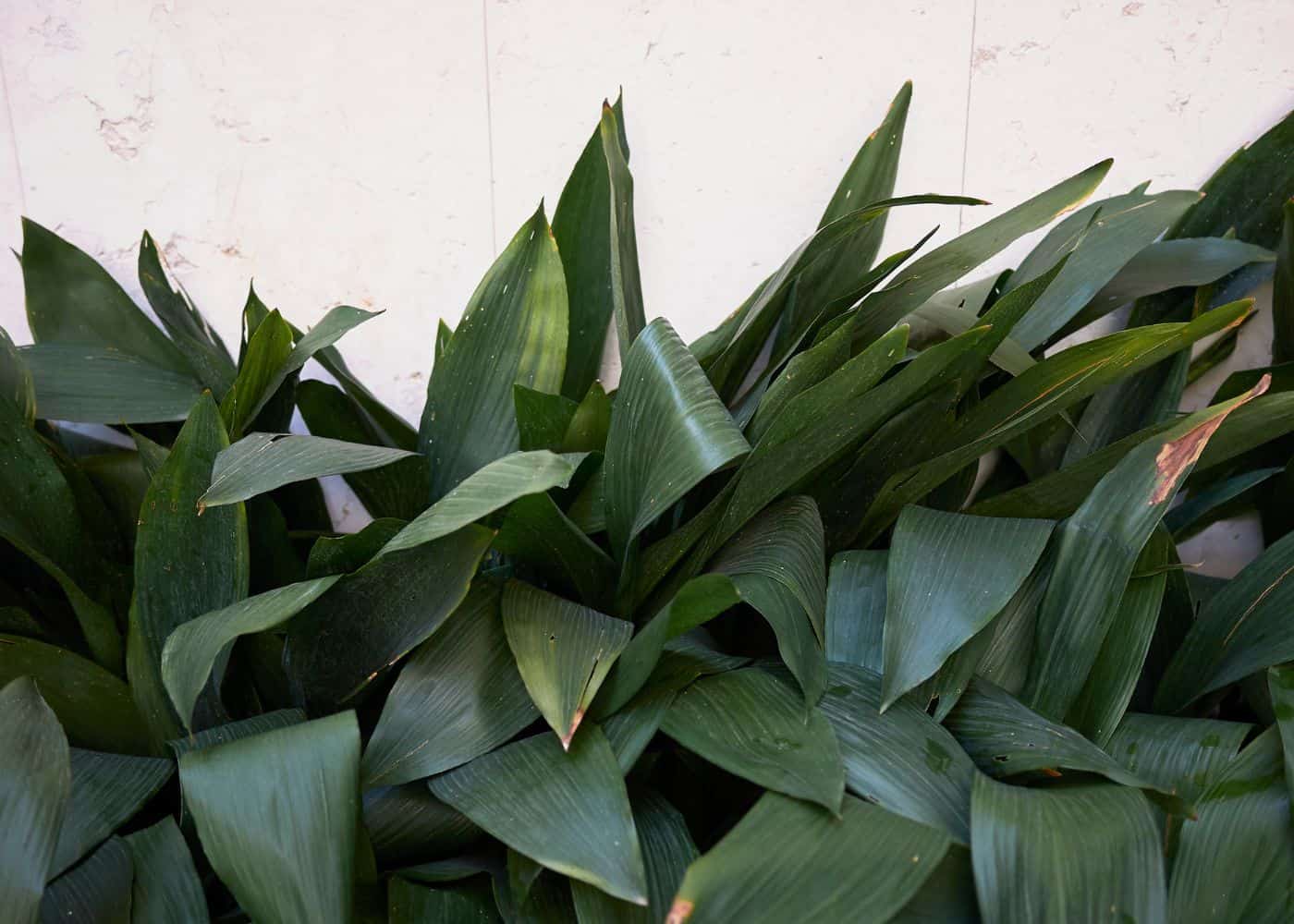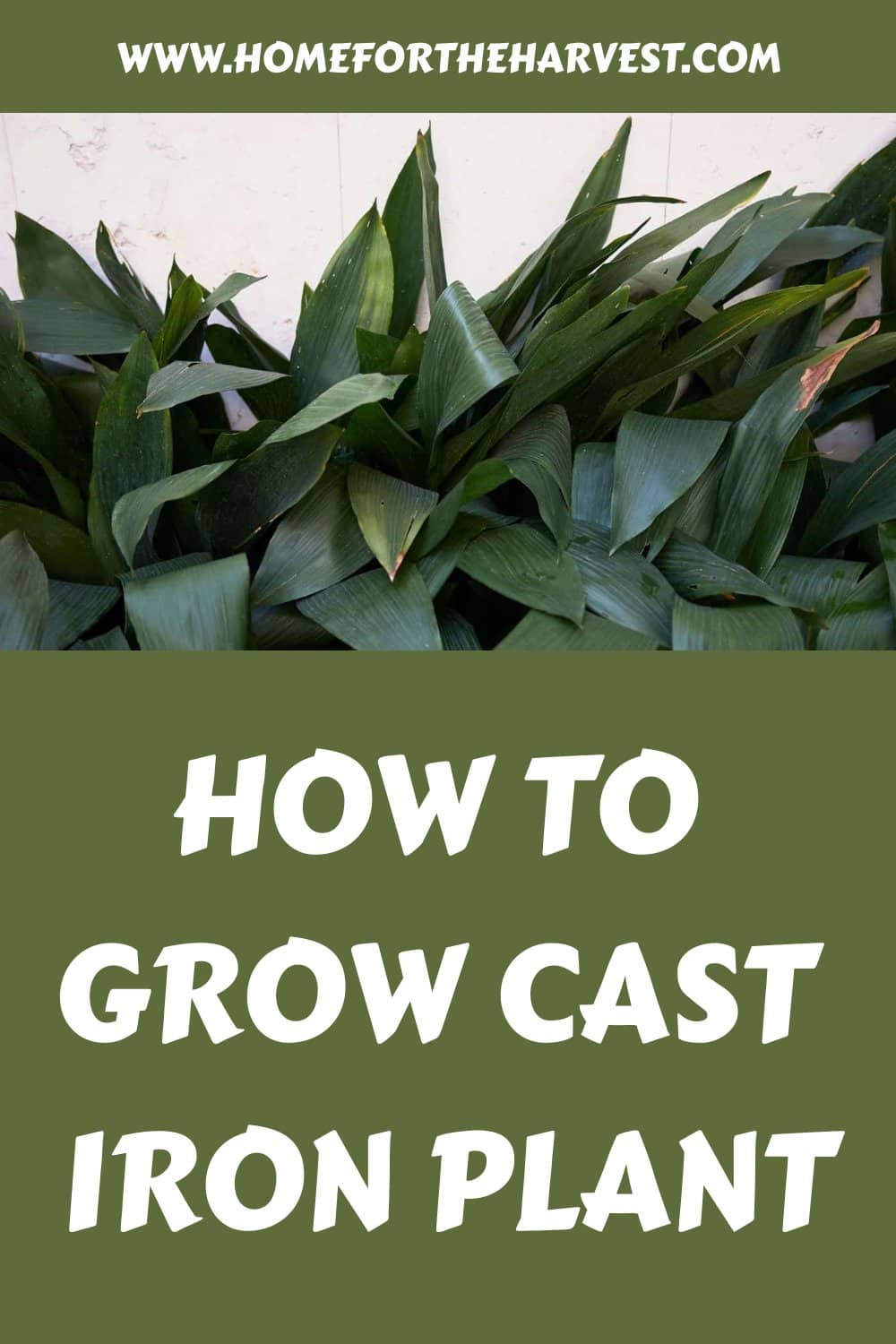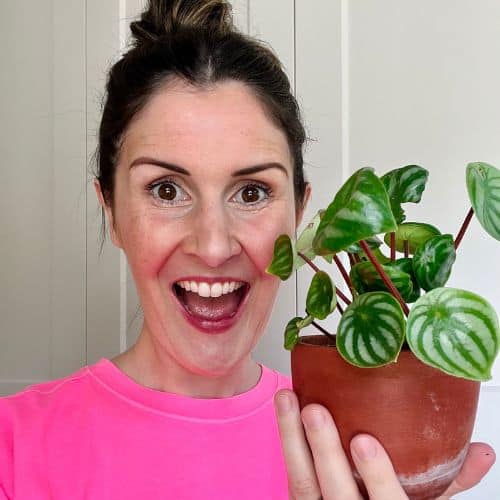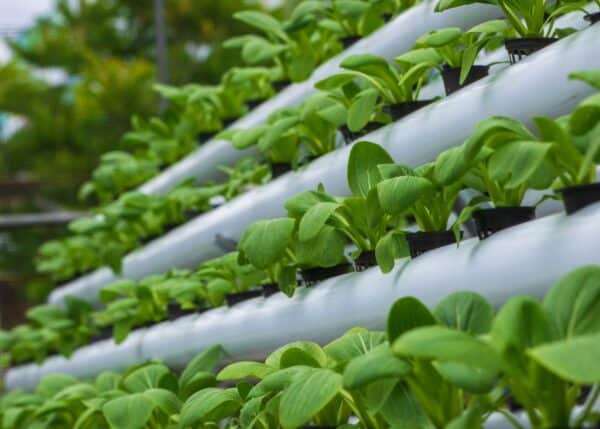Is there anything better than a plant that is low-maintenance, handles neglect well, and looks good while doing it? It sounds too good to be true, but these characteristics all apply to one garden essential – the cast iron plant.
Cast iron plant (Aspidistra elatior) is incredibly easy to grow, tolerating low light and many different soil types. They grow best with regular watering but don’t struggle too much with a missed watering or two. Some simple maintenance will keep the leaves green and glossy year-round.
What are cast iron plants?
The cast iron plant is scientifically known as Aspidistra elatior– a fun name to say and an even more fun plant to grow. It is part of the Asparagaceae family, related to other popular plants like yucca, hostas, and of course – asparagus itself.
These plants are commonly known as cast iron plants or bar-room plants for their tough nature. They are able to withstand plenty of neglect and continue to thrive in less-than-optimal environments. This makes them a great choice for beginner gardeners growing either indoors or out.
Cast iron plants are arguably most famous for their use as a houseplant. However, if you live in the right climate, they make wonderful foliage plants for outdoor containers. They can also be used as bedding plants, planted among other foliage plants where the leaves can truly shine.
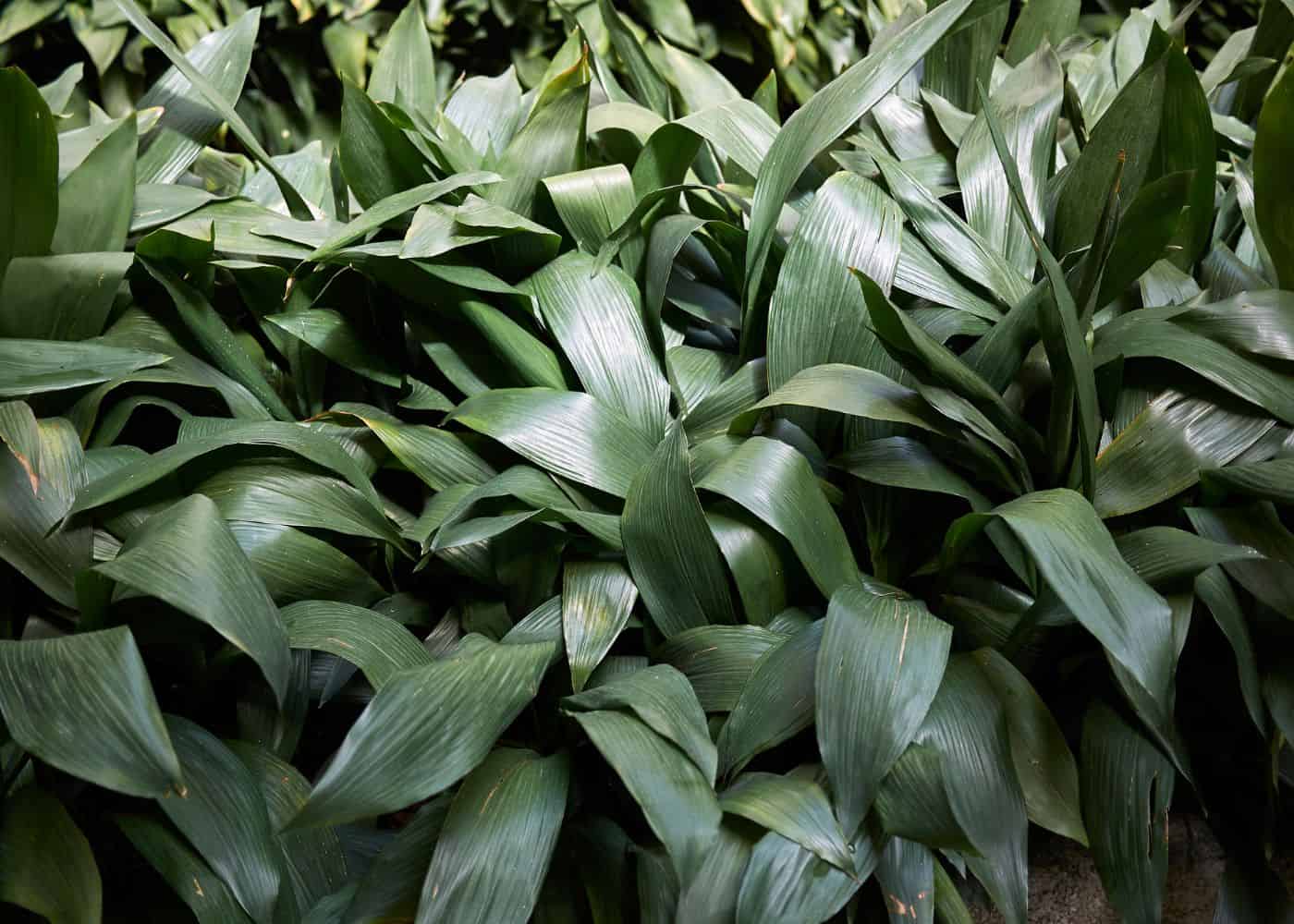
Where do cast iron plants grow best?
Although these plants are incredibly easy to grow and adapt to a wide range of growing conditions, providing the ideal growing conditions will ensure your cast iron plants look their best year-round.
Light
Cast iron plants love the shade, which is what makes them great for growing indoors. They tolerate low levels of light well and don’t mind the darker corners of your home and garden. You’ll see stronger growth with dappled shade outdoors or bright indirect light indoors, but they will also be happy in deep shape or low light with little signs of struggle.
Temperature and humidity
Cast iron plants grow best in warmer weather. They don’t tolerate cold temperatures well and are best kept out of temperatures below 40F to prevent damage. They do handle cold snaps better than most indoor plants but can start to die off if left in the cold for too long.
When growing indoors, this means they should only be planted in USDA Zones 8 and above, unless they are heavily protected in winter. At a push, gardeners in Zone 7 can also keep these tough plants outdoors. But if you’re not sure and want them to perform their best, indoors and above 50F is best.
Thanks to their humid native environments, higher humidity levels are preferred. However, as cast iron plants are so accommodating and adaptable, they usually don’t mind any humidity levels above 30%.
Soil
Extending their fuss-free character, Aspidistra elatior can grow well in almost any soil type. The only requirement, as with many plants, is that the soil drains well. If the soil remains soggy and waterlogged (clay soils, for example), the roots will become mushy and rot, ultimately killing the plant.
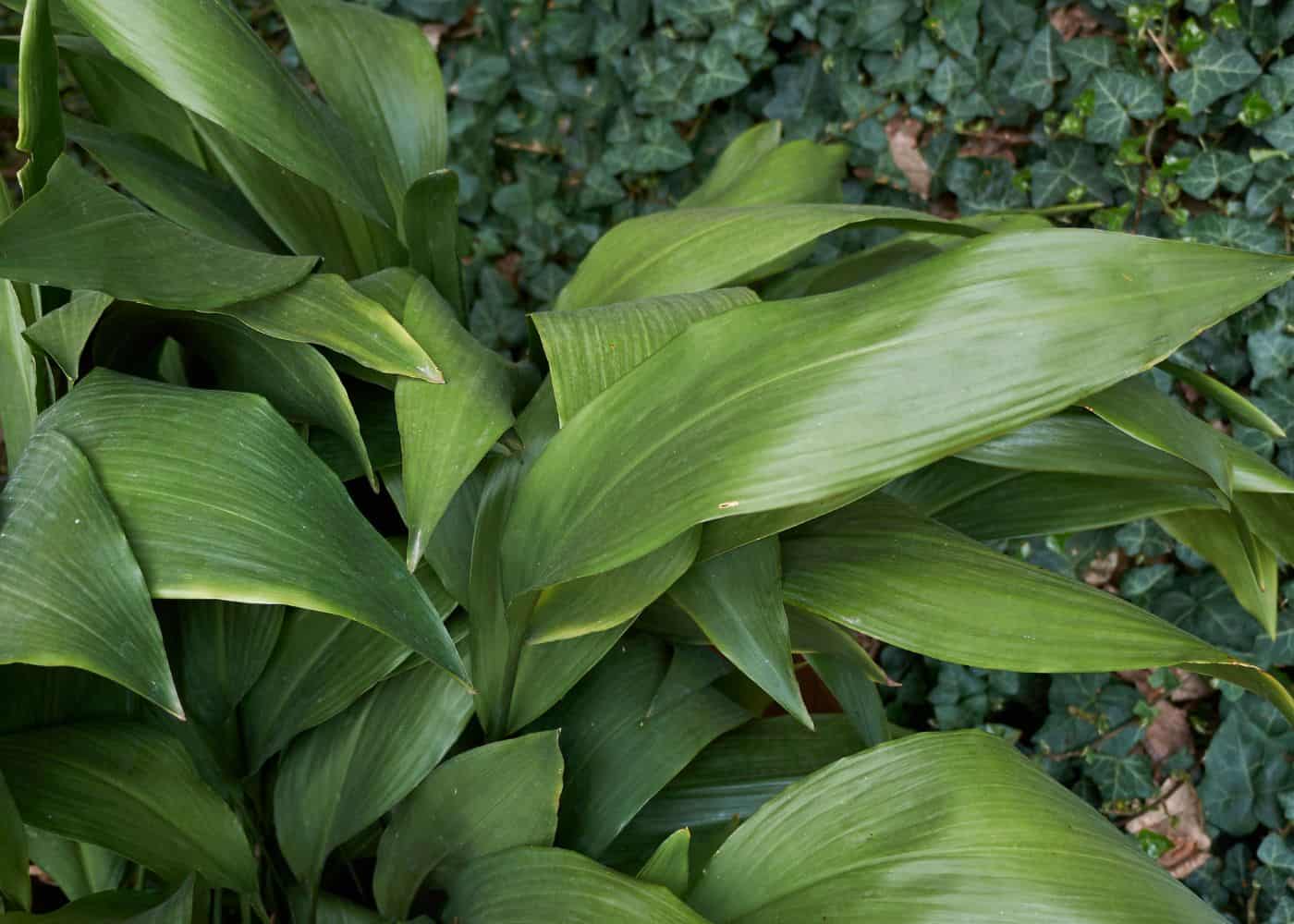
How to care for cast iron plants
Once they are in the right environment, there is little care or upkeep required to keep your cast iron plant looking good.
Water
Looking at the thin and narrow leaves of the cast iron plant, you may assume they will quickly wilt without water. However, these tough plants handle a missed watering or two quite well.
They do prefer consistently moist soil but can be left to dry out every now and then without worry. I’ve had a cast iron plant in my home for as long as I can remember and despite the many times I’ve forgotten to water it, a quick drink revives the leaves almost instantly.
Fertilizer
If you want your cast iron plant to put out as many new leaves as possible and stay lush, fertilizer is important. They can survive with fewer nutrients than other foliage plants, but grow better with a nutrient boost.
Indoor cast iron plants should be fertilized once every 6-8 weeks to make up for nutrients lost in containers. Outdoors, you can fertilize around once per season in spring and summer, stopping in fall and winter.
Maintenance
Cast iron plants are remarkably low maintenance. There are only a few additional tasks to complete, depending on where you want to plant them.
The first is repotting. This task obviously only applies if you are planting in containers indoors or out. Eventually, the roots will outgrow the container or the soil will begin to degrade, needing a new pot and a fresh mix. The right time to repot will depend on the growth rate of your plant and the conditions it is in. Wait until you spot growth problems, like roots growing through the drainage holes, before you repot.
The second task is pruning. Pruning is not always necessary but can be useful in improving growth. Using sharp pruning shears, remove any old underperforming, brown, or yellowing leaves to focus the plant’s energy on new healthy growth. Also remove any leaves with signs of disease to stop the issue from spreading.
Finally, keep a close eye out for pests and diseases, especially indoors. Deal with any issues as soon as they pop up to prevent spread and keep your cast iron plants healthy year-round.


